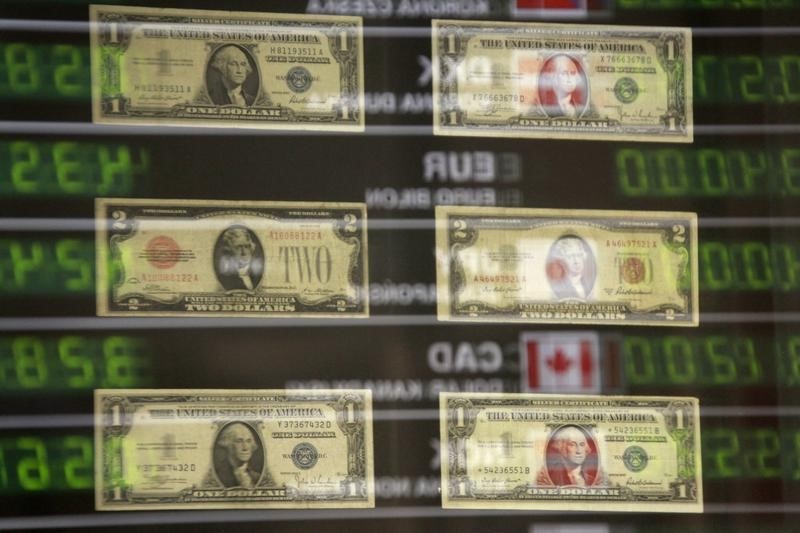Investing.com - The euro fell against the broadly stronger dollar on Friday as the diverging monetary policy stance of the European Central Bank and the Federal Reserve continued to pressure the single currency.
EUR/USD was at 1.0603 in late trade, down 0.51%. For the week the pair lost 3.57%, the worst weekly performance since September 2011.
The euro was also weaker against the yen, with EUR/JPY down 0.81% to 127.48 at the close, the weakest since March 16.
Demand for the dollar was underpinned by expectations for higher interest rates, as investors regained confidence that the U.S. economy would continue to recover after recent economic reports pointed to a slowdown at the start of the year.
The greenback received a boost earlier in the week after comments by the presidents of the New York and Richmond Federal Reserve banks made the case for the Fed to begin policy tightening as early as the summer.
Some investors had pushed back the timing of a rate hike until late 2015 after a surprisingly weak U.S. employment report for March.
The dollar rose to more than five-year highs against the pound, with GBP/USD touching lows of 1.4587 before settling at 1.4632. The pair ended the week down 1.93%.
In other trade, USD/JPY slid 0.32% to 120.19.
The U.S. dollar index, which measures the greenback’s strength against a trade-weighted basket of six major currencies, was up 0.38% to 99.63 late Friday. The index gained 2.89% for the week.
Elsewhere, the Canadian dollar notched up modest gains against the greenback, boosted by small gains in oil prices and an unexpectedly strong domestic jobs report.
Official data showed that the Canadian economy added 28,700 jobs in March. Economists had expected the employment level to remain unchanged.
USD/CAD ended at 1.2564, 0.11% lower for the day.
In the week ahead, Wednesday’s monetary policy announcement and press conference by the ECB will be closely watched. A central bank meeting in Canada will also be in focus. Investors will also be looking ahead to Friday’s reports on U.S. inflation and consumer sentiment.
Ahead of the coming week, Investing.com has compiled a list of these and other significant events likely to affect the markets.
Monday, April 13
Japan is to release data on core machinery orders, while Japan’s central bank is to publish the minutes of its latest policy meeting.
China is to release data on the trade balance.
Tuesday, April 14
New Zealand is to produce private sector data on business confidence.
The U.K. is to release data on consumer price inflation.
Later in the day, the U.S. is to release data on retail sales and producer prices.
Wednesday, April 15
Australia is to publish private sector data on consumer sentiment.
China is to release official figures on GDP growth and fixed asset investment.
The ECB is to announce its interest rate decision. The rate announcement is to be followed by a press conference with President Mario Draghi.
Canada is to release data on manufacturing sales.
The U.S. is to release reports on industrial production and manufacturing activity in New York state.
Later Wednesday, the Bank of Canada is to announce its latest monetary policy decision and hold a press conference.
Thursday, April 16
Australia is to release its latest employment report.
Switzerland is to publish data on producer prices.
The U.S. is to release a string of reports, including jobless claims, building permits, housing starts and manufacturing activity in the Philadelphia region.
Friday, April 17
Switzerland is to publish data on retail sales.
The U.K is to release its latest employment report.
The euro zone is to produce revised data on the consumer price index.
Canada is to publish reports on consumer prices and retail sales.
The U.S. is to round up the week with data on consumer prices and consumer sentiment.
